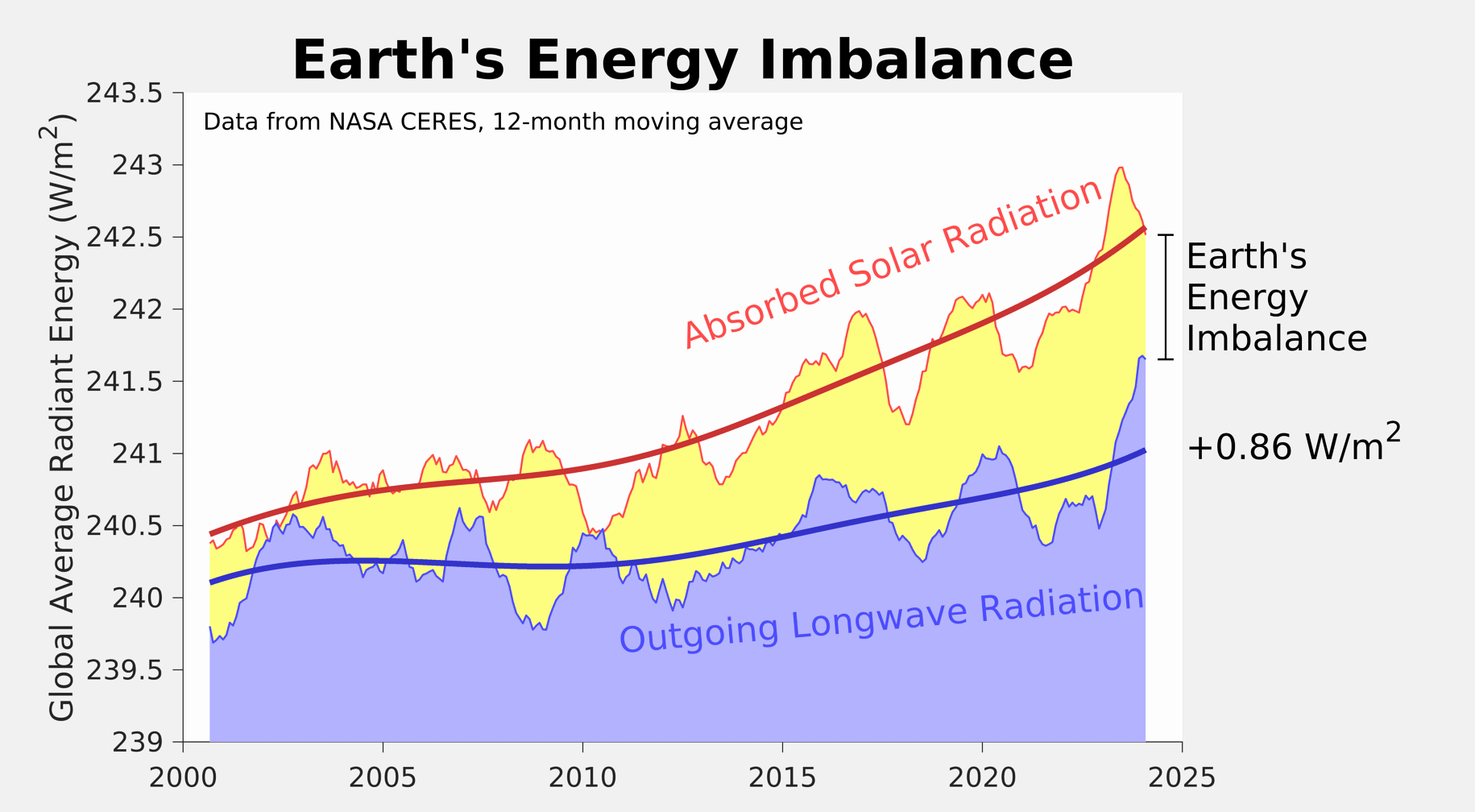Most climate models do expect absorbed solar radiation to increase as global warming progresses. This would be due to a reduction in low cloud cover, a reduction in snow and ice at the surface, and an increase in water vapor, all of which favor an increase in absorbed solar radiation. However, the observed changes indicated by the CERES program are far more rapid than typically expected by climate models given the current pace of global warming.
The change in cloud cover and rapid increase in absorbed solar radiation may be due, in part, to the recent reduction is man-made sulfur and other aerosols that have historically served to block a portion of the incoming solar radiation and facilitate cloud formation. In essence, recent efforts to reduce smog and other air pollution may have inadvertently accelerated global warming. It is also possible that some of the changes in cloud cover are due to natural variability or other feedback processes. Better understanding the recent changes in cloud cover and the associated increases in absorbed solar radiation will be vital for ensuring accurate forecasts of the future.


Segnalibri